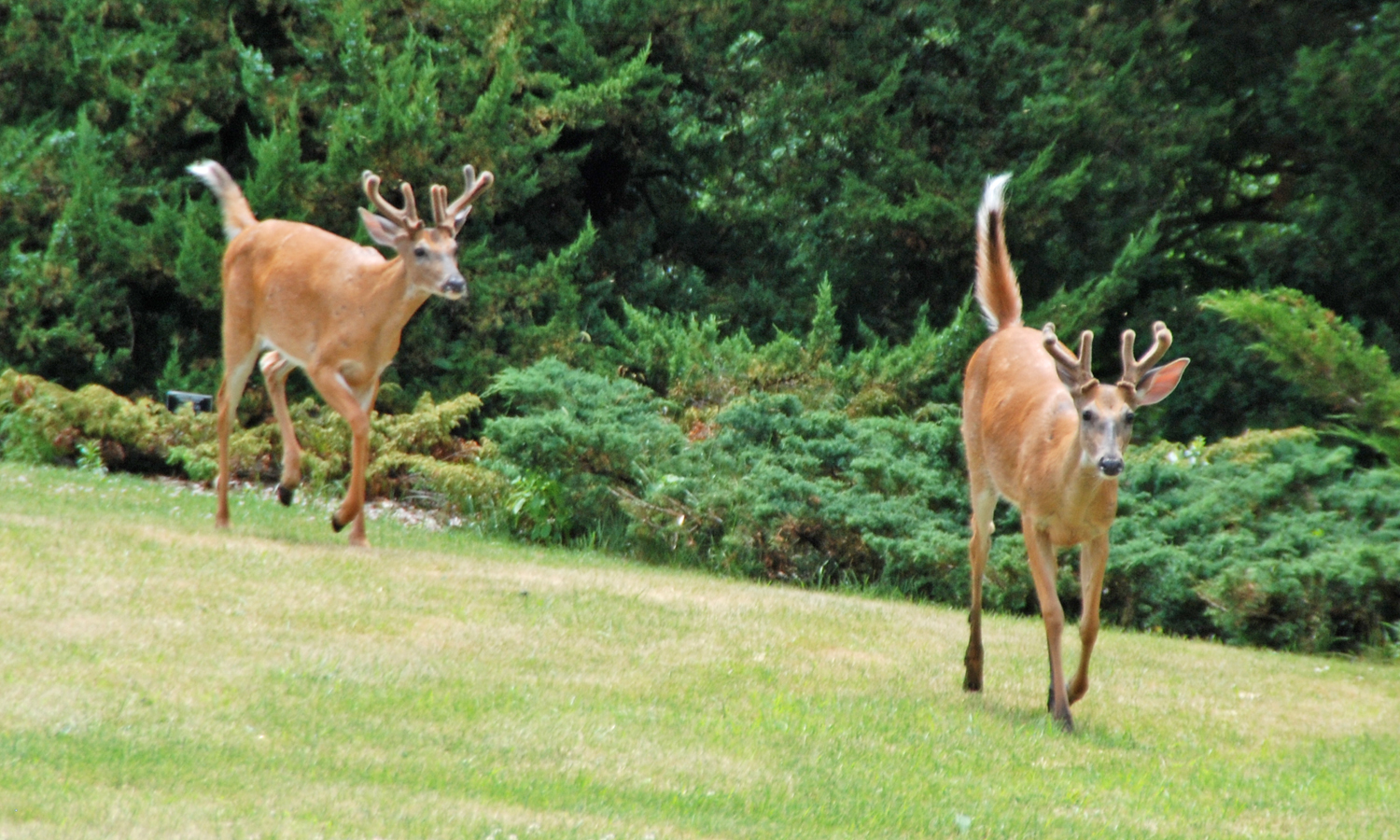A Midwinter’s Walk Through Your Landscape
Being proactive in autumn is your best bet for effective over-winter protection. Spray your vulnerable landscape plants with Plantskydd Animal Repellent in October or early November. Even if you did spray repellent in the fall, it’s still a good idea to get out there and take a close look with a midwinter’s garden walk-through. If you ran out of time or the weather turned colder sooner than expected, this winter perusal is especially important.

Creating a beautiful landscape is an investment of time, money and labor that artfully frames your home year-round, whether you do it yourself or have it done for you. During the winter months you may not be outside enjoying it as much, but still, as you look out from your windows indoors admiring handsome evergreens, colorful bark on leafless shrubs, and dried hydrangea flowers clinging to bare branches like a still life, you take pride in creating this winter wonderland.
Moose, elk, deer, rabbits, squirrels and voles are just some of the hungry animal browsers who do not hibernate over the winter. Competing for food sources is a daily grind and may become a survival situation based on the severity of the weather and fierce competition for the same sparse food. Acorns are a food source staple for many browsers. If there’s a low count in a given year, that too can affect small critters and deer by causing them to aggressively browse your evergreens, woody shrubs, rose canes and perennial groundcovers. One thing for sure:they all need to eat and feed their families daily.


This arborvitae and yew looked fine from the house but when examined up close during my midwinter walk-through, the real story was being told. Time to spray right now to stop this browsing in its tracks. If I’d waited until spring to walkthrough, the continued damage may have been irreparable by then.
Remember to look closely at both the front and backs of arborvitaes and yews that may have been browsed by a family of deer, including branches under the snow. They move in groups, so moving along an evergreen hedge in a buffet-line fashion can be a daily event, especially after dusk. Since they’re able to get up on their back legs, deer have a higher browse line than you may think, while both rabbits and deer will climb up on snowbanks to reach branches higher up to strip them of their nutritious evergreen needles. Mice, rabbits and squirrels may chew the bark off branches and even the juicy cambium layer beneath the bark, which could girdle a plant. Severe browsing like this may kill the plant.

Another food zone for browsers on trees and shrubs are their root flares, which are at the base of the plant where the trunk widens outward. In fall, I spray the root flares of shrubs and small trees here in Michigan, since both the snow and the low branching eventually create a dining haven for critters keeping a low profile from watchful predators like owls, hawks, cats, foxes and coyotes. They’re motivated to burrow under the snow for a food source and do a lot of damage. If you spot this during your midwinter walk-through, spray the root flare at that time to ensure that the plant doesn’t get browsed even more through the vulnerable months of March and April when animals need even more protein because they may be pregnant, nursing, or pushing a new antler rack.
Perennial Ground Cover Protection:
Coral bells and other semi-evergreen groundcover perennials like ajuga, pachysandra, myrtle, ivy, and euonymus can hold their leaves all winter long. In the northern belt, you can see them in the landscape as the snow load ebbs and flows. When these groundcovers are exposed as the snow wanes, critters may make a move to get to “fresh meat” so to speak.
It’s best to spray these plants in the fall when doing your winter protection spraying program. If you didn’t get to it, spray them thoroughly during the midwinter thaw. This is particularly true for the coral bells as both rabbits and deer eat the leaves, but even worse, they chew out the center crown of the plant. That can affect the plant’s ability to regrow properly in the spring. Worse, it can weaken the plant overall and zap the energy it needs so it will gradually die out and disappear. That is easily preventable with a proactive spraying of Plantskydd.
A midwinter walk-through can save you a lot of grief and plant damage or even loss by taking a closer look at what is actually going on out there. Timing is everything, and waiting until spring may be too late.



Julia Hofley is a garden writer and lecturer from Michigan
Julia has learned three key lessons from her garden: there are also four seasons of animal browsing; weather truly affects how plants grow; and timing is everything when applying animal repellents successfully.





